Equipping the garden with exotic plants is appealing. But often the winter limits the choice. So which exotic species are hardy?
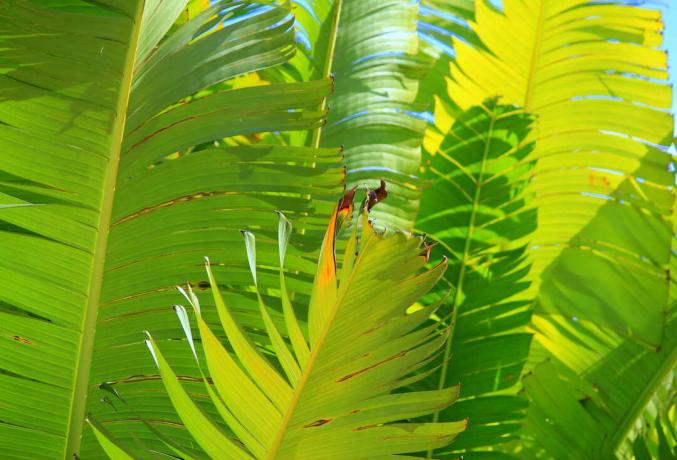
Whether on vacation or just looking at photos from the Caribbean: the feeling of something unique from the The plant world, and thus a little piece of vacation in the house, is easy on everyone, especially in winter once. So what would be ideal would be a unique plant that does well even in our latitudes. In this article we will show you different plants that can withstand the frosts in our region.
contents
- Hardy bamboo: suitable species and varieties
- Hardy bananas: year-round varieties in the garden
- Hardy calla
- Hardy cacti: Robust and frost-tolerant varieties
- Hardy succulents
Hardy bamboo: suitable species and varieties
For fans of Asian culture, bamboo is probably the best way to feel as close to this continent as possible. With careful planning and a little knowledge of hardy species, this Asian magic can also unfold its effect in the cold season. In the following, we will show you the most beautiful types of bamboo, which will also inspire you in winter.
Muriel bamboo (Fragesia murielae)
- Bamboo with a height of 2 to 3 m; light green foliage; suitable for a sunny to partially shaded location with preferably slightly acidic soil
- hardy to -25 ° C
- clump-forming and not overgrown growth
- suitable as a single plant in the bed, as a container plant or as a hedge plant
- must always be kept moist
- popular varieties: 'Brilliant', 'Standing Stone'

Fountain bamboo (Fragesia nitida)
- reaches heights of growth of up to 4 m
- hardy to around -25 ° C
- lush green foliage
- suitable for sunny to partially shaded locations with nutrient-rich, but well-drained soil
- In addition to planting beds, it is also suitable for tubs
- popular variety: 'Jiuzhaigou 1'
Japanese arrow bamboo (Pseudosasa japonica)
- 3 to 5 m high
- particularly hardy to -20 ° C
- rather light green leaves
- suitable for both damp and drier locations
Hardy bananas: year-round varieties in the garden
With hardy banana trees (Musa) create an exotic flair that few other plants can create. Normally these plants are native to milder climes without frosts, but there are some species that defy low temperatures down to -10 ° C. If stronger frosts are expected, you should use winter protection for safety, regardless of the comparatively pronounced frost tolerance.
Japanese fiber banana (Musa basjoo)
- hardiest known species; resistant down to -15 ° C
- after mild winters it also blooms in our latitudes
- reaches heights of 2.5 to 3 m
- prefers a sunny, but sheltered location
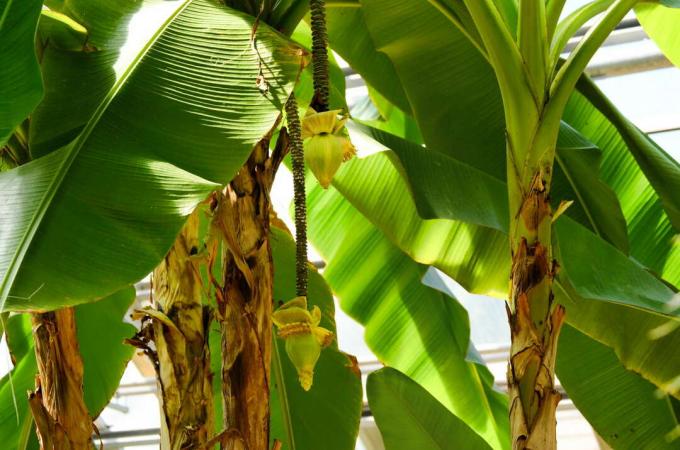
Darjeeling banana (Musa sikkimensis)
- Perennials resistant to -5 ° C and rhizomes to -15 ° C
- sunny and sheltered location
- Variety: 'Red Tiger'
What to look for when Buying banana plants should pay attention to find out here. And how not to be hardy Banana trees overwintered, we explain in this article.
Hardy calla
The Dragon Arum (Calla palustris) comes from the South African swamps and has adapted to very humid and extremely dry periods. It impresses with its pure white flowers. The wild form of the beautiful garden plant is even indigenous and can seldom be marveled at in moist habitats (wet meadows, moors) in the wild. The native dragon arum survives the winter unscathed, although the above-ground part of the plant retreats in winter. However, the Calla will sprout again without any problems in the next year. But be careful: It is more problematic with the similar looking room calla (Zantedeschia). This is by no means hardy. It originally comes from Africa and should not be exposed to temperatures below 10 ° C.
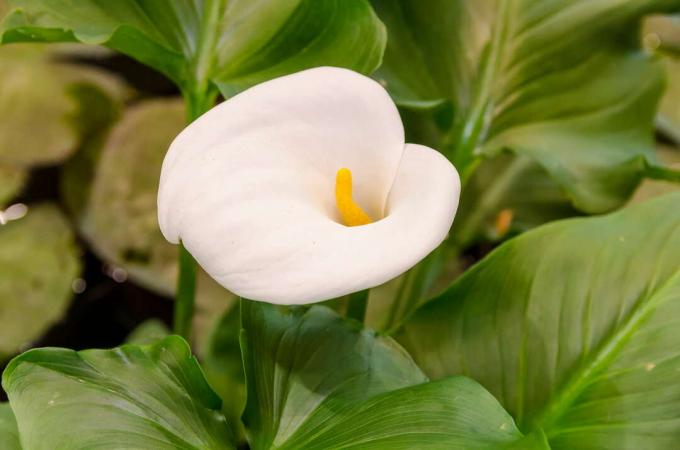
Hardy cacti: Robust and frost-tolerant varieties
The cactus family (Cactaceae) fascinates with their arrangement of thorns and sometimes very exotic flowers. There are also a large number of variations within the flower color. We will introduce you to the most beautiful species and varieties for the cold season.
Tree Cholla (Cylindropuntia imbricata 'Pinky‘)
- grows in dense columns
- Flower color: pink
- hardy to -25 ° C
Oklahoma Cone Cactus (Echinocereusreichenbachii)
- grows cylindrically with dense spines
- Flower color: purple
- hardy to -20 ° C
Beehive cactus (Escobaria vivipara)
- small spherical cactus
- Flower color: pink-violet
- hardy to -35 ° C
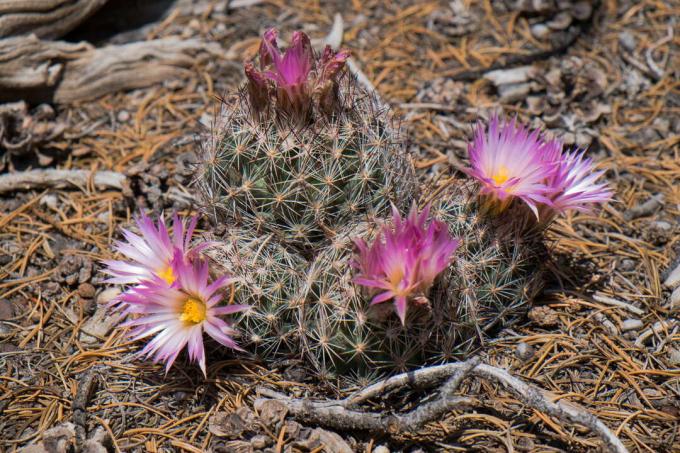
Stick cactus (Opuntia imbricata)
- limber to succulent growth up to 100 cm in height
- Flower color: pink-violet
- hardy to -25 ° C
Brown thorn pear (Opuntia phaeacantha 'orangeade‘)
- medium-sized cactus with limber growth
- Flower color: orange
- hardy to -20 ° C
Opuntia (Opuntia polyacantha)
- compact, articulated growth up to 25 cm in height
- Flower color: yellow
- hardy to -30 ° C
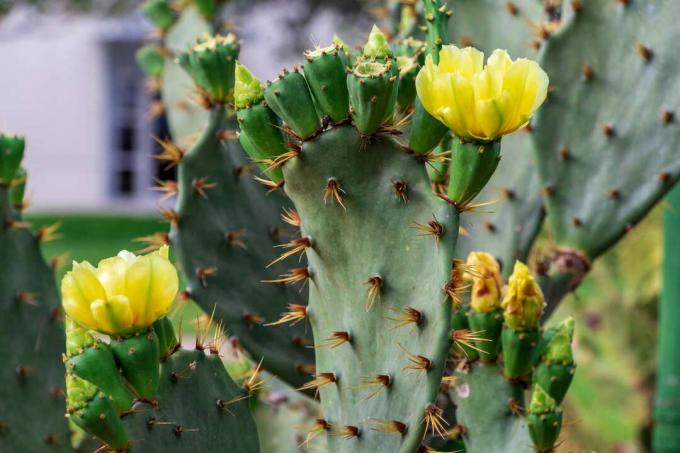
Hardy succulents
Succulents are plants with fleshy, water-storing organs such as a shoot or leaves. Cacti are also part of the succulents. But in addition to the thorny water reservoirs, there are a variety of other beautiful and hardy succulents. As a rule, these succulents stay very low, with the exception of the sprawling agaves. The following variants are suitable for more or less severe winters in your garden:
Agave (Agave neomexicana)
- spreading growth; 60 - 100 cm high
- Flower color: blue
- hardy to -20 ° C
- Location: sunny; bucket
King agave (Agave victoriae-reginae 'Queen Victoria')
- spreading growth; 60 - 80 cm high
- Flower color: blue
- hardy to -12 ° C; possibly. Winter protection
- Location: sunny; bucket
Stonecrop (Sedum)
- carpet-like growth; 5 - 10 cm high
- Flower color: yellow; Flowering period: June / July
- hardy to -20 ° C
- Location: sunny; Rock gardens, wall joints
Cobweb houseleek (Sempervivum arachnoideum)
- rosette-like growth; 3 - 10 cm high
- Flower color: pink; Flowering period: June / July
- hardy to -20 ° C
- Location: sunny; Rock gardens, green roofs, dry stone walls
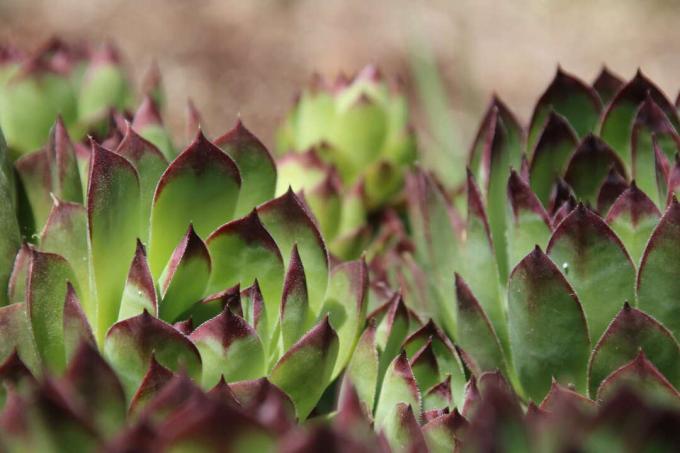
A great overview hardy plants, we have put together for you here.
